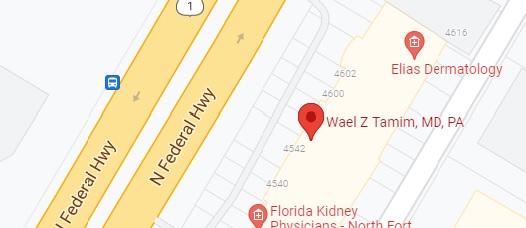What is an Abdominal Ultrasound?
An abdominal ultrasound is a safe and painless diagnostic procedure that uses sound waves to produce real-time images of the internal organs and other anatomical structures within your abdomen.
Uses of an Abdominal Ultrasound
An abdominal ultrasound may be ordered to diagnose conditions such as:
- Underlying cause for abdominal pain
- Enlargement of organs
- Abnormal liver function
- Abdominal aortic aneurysms
- Gallstones
- Kidney stones
How does an Abdominal Ultrasound Work?
Small pulses of inaudible, high-frequency sound waves are passed through the body from a special handheld device known as the transducer, which is pressed against the skin. The sound waves bounce off the internal anatomical structures and are captured by a sensitive receiver in the transducer. It is possible to measure the size, shape, and consistency of the internal anatomical structures, based on the variations in the pitch and direction of the returning sound waves.
Preparation for an Abdominal Ultrasound
- You will be given specific instructions, depending on your condition.
- To evaluate your kidneys, you may have to drink 4-6 glasses of water to fill up your bladder. You may be asked to avoid eating for 8-12 hours to prevent the build-up of gas in your intestines.
- To evaluate your gallbladder, liver, and spleen, you may be asked to eat a fat-free meal the evening before the procedure and nothing thereafter for the next 8-10 hours.
- To evaluate the abdominal aorta, you need to avoid eating for 8-12 hours prior to the procedure.
- Wear loose-fitting clothing as you need to uncover your abdomen for the procedure.
Abdominal Ultrasound Procedure
The procedure for an abdominal ultrasound involves the following basic steps:
- You will lie on your back on an examination table.
- A water-based gel will be applied to the skin over your abdomen to prevent the formation of air pockets between your skin and the handheld transducer that could block the sound waves.
- The hand-held transducer is placed over the skin on your abdomen and moved back and forth to obtain the desired images, which can be viewed in real time on a monitor.
- You will feel no discomfort during the procedure.
- When the imaging process is complete, the gel will be wiped off your skin.
- The entire procedure is usually completed in half an hour.
What happens after an Abdominal Ultrasound?
You can return to your routine activities after the procedure. A radiologist or trained doctor will analyze the images and send the report to your doctor, who will share the results with you.
Risks of an Abdominal Ultrasound
There are no known harmful effects from a standard diagnostic abdominal ultrasound procedure.
Benefits of Abdominal Ultrasound
- Painless and non-invasive procedure
- Does not involve the use of radiation
- Produces clearer images of soft tissues compared to X-rays
- Can help guide minimally invasive procedures as it can provide real-time images


